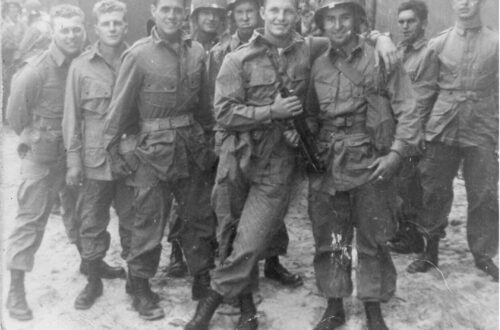
A 4th of July Tribute (Part 1/2)
Each year on the 4th of July, I take some time away from cookouts, fireworks, and my family to spend a few moments with my favorite firearm. I sit alone in my gunroom, reflecting upon the one piece in my collection that for me most embodies Independence Day. It doesn’t have a gas cylinder, it isn’t even Parkerized. It isn’t a mint, perfect example; in fact it is probably the worst condition piece in my collection. It is a well-used Model 1763 Charleville flintlock musket, which features a branded “U STATES” surcharge and three sets of initials carved into the stock. Both sling swivels have been removed and the studs filed nearly flush. You can’t even cock the hammer due to a broken spring or worn sear. It is beat up and ugly; but I cherish this old musket. When I hold it I wonder about the three men whose initials give this old musket character. Were any of them members of the Continental Army? If so, in what battles did they carry this old musket? To what hardships were these men subjected? I don’t know the answers to these questions, but I believe that this old musket was used to forge our freedom. Without men like the three who may have carried this old musket into battle, there would be no 4th of July celebration with cookouts and fireworks; nor would there be a United States of America.
M1763 Charleville
The French Model 1763 Flintlock Musket was the most widely used military firearm of the American Revolution. The Model 1763 Infantry Musket was state-of-the-art for the day. It was a smoothbore musket of .69 caliber, featured flintlock ignition, was slightly over 60 inches long and weighed nearly nine pounds. Students of the period believe that over 100,000 flintlock military muskets of various models were obtained from France during our Revolution. The Model 1763 pattern arm was produced at three French National Armories: Charleville, Maubeuge, and St. Etienne. Collectors refer to all, regardless of location of manufacturer, as Charlevilles. The Model 1763 was a specific model and French designation, but the nomenclature has long been used by collectors to describe quite a few variations and modifications of later French arms through adoption of the Model 1777. The Charleville was later used as the pattern for the first U.S. Armory produced weapon, the Model 1795

My Old Musket
My Model 1763 was produced at the St. Etienne Armory, in the 1760s. The first photograph of my old musket was taken in my shop and shows the overall musket with bayonet affixed. Noted American Revolution historian and author, George Neumann, believes the bayonet to be of American manufacture in the 1750 to 1775 time frame. The other two photographs depict the lock and the “U STATES” surcharge.
During the American Revolution, the theft of continental muskets became a serious problem. When a soldier’s enlistment expired he went home, often taking his musket with him. If this habit were permitted to continue, the Army would soon be without a sufficient quantity of arms with which to continue the War. On February 4, 1777, the Board of War recommended to Congress that all continental arms be stamped with “United States.” On February 24th, the Continental Congress resolved: “The arms and accoutrements, belonging to the United States, shall be stamped with the words ‘United States’, all arms already made to be stamped on such parts as will receive the impressions, and those hereinafter to be manufactured, to be stamped with the said words on every part comprising a stand.”
General Washington implemented this resolution on March 31, 1777, directing Colonel Benjamin Flower of the Commissary General’s Department to have all arms so stamped. On April 18, Washington issued a general order from his headquarters in Morristown, New Jersey, that all arms in stores and in the hands of troops be marked immediately.
It is uncertain how rapidly his order was carried out. However, a “U STATES” brand is listed in the March 21, 1778 inventory of James Pearson, one of the commissaries of military stores. Historians of Revolutionary War arms agree that the earliest surcharge consisted of “UNITED STATES” branded into the stocks, or the contraction “U. STATES” or “U STATES.” It is believed that these variations date from 1777 through 1780. It is also believed that in late 1780, the surcharge was further contracted to “US.” This abbreviated surcharge variation is most often found struck on the metal components rather than on the stock. The “US” surcharge remained in use following the end the Revolution and throughout the “Federal period.”


Stay tuned for part 2!


